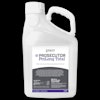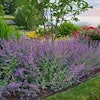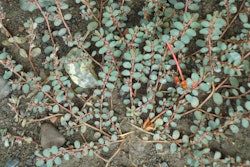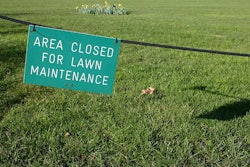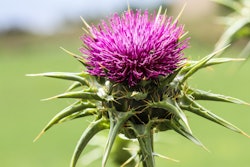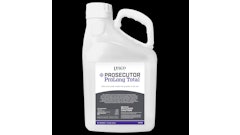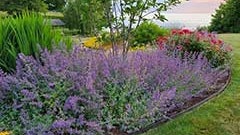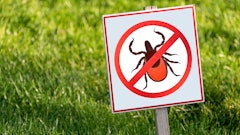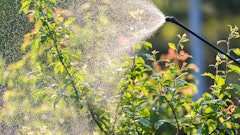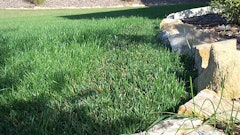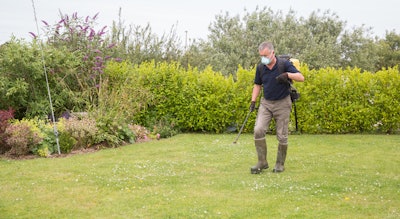
Over the course of a year, lawn care operators tend to worry most about labor, equipment and keeping their customers satisfied. If you ever have a chance to think about turf grass, it is usually fertilizers, herbicides and cultural practices that consume most of your thoughts. However, in nearly every part of the country, turf-grass pathogens can negatively impact your customers’ turf quality. In some cases, you can grow the turf out, but in others, it may make more economic sense to apply fungicides to help prevent lasting damage.
This article discusses what types of fungicides are available, in addition to how the political environment is creating a new niche of business from which you can actually expand your business offering.
Where to Start
Let’s look at fungicides as a whole. Usually, the first question is: When does it make economic sense to apply a fungicide? In a proper integrated pest management (IPM) program, one of the first things you need to do is determine a threshold. In agriculture, it is very simple to determine the threshold—it’s where the cost of the crop yield loss exceeds the cost of the application. In turf, it is a bit more subjective, but ultimately, it is when the damage exceeds your customers’ expectations.
You should also include the cost of the fungicide application compared to the cost to repair or rectify the damage sustained. The cost to repair damage may include multiple applications of pesticides, seeding, labor, etc. This becomes an even easier decision on sites where there is history of disease occurring on a regular basis.
Types of Fungicides
The three basic types of fungicides include:
- Contact fungicides.
- Systemic fungicides.
- Plant activator fungicides.
Contact fungicides essentially create a protective barrier on the outside of the plant. They usually protect turf for seven to 14 days.
Systemic fungicides actually go inside of the plant to defend it from within, protecting the plant for up to 28 days. If turf grass is under attack when you make an application, it is generally thought that systemic fungicides are the way to go. Systemics also have an advantage when it comes to root diseases like take-all patch and spring dead spot.
In contrast, plant activator fungicides trigger the plant to boost its defense response and protect the plant for up to 28 days. By triggering the plant’s defense response, they are often associated with other side benefits for the plant like drought, wear and cold tolerance.
Resistance Risk
Another thing you should consider is proper fungicide rotation, especially when using systemic fungicides. Every fungicide is assigned a Fungicide Resistance Action Committee (FRAC) mode of action (MOA) code. These are often listed in a black box with a letter or number on the front of the label. The code represents a fungicide group determined by the FRAC, and it is very important to rotate between these FRAC groups so that plants and turf grass do not develop fungicide resistance over time.
Many fungicides are blends of multiple FRAC-code products. You may think you are rotating chemistries because you are using different brand names or even chemical names. If unaware, you may very well be using the same group of chemistry repeatedly, which increases the likelihood that fungicide does not work as well in the future. Much like penicillin for humans, the repeated use of the same type of chemistry develops resistant strains.
Times Are Changing—You Can, Too
Many state and local governments are starting to legislate against fertilizer, and increasing chemical restrictions in certain areas. This is mostly done to protect drinking water, but increasingly is done out of concern for public health. Applications to institutional grounds are especially under scrutiny. Some areas are banning pesticide use altogether, particularly on public property. This trend is expanding its way across America: Lawn care operators with an eye on the future are looking at ways to address this issue with biofungicides.
There are a variety of biofungicides available on the market and most are Organic Materials Research Institute (OMRI) listed. The majority rely on certain strains of bacteria that affect fungal growth. The newest and maybe most interesting OMRI-listed products are the plant activators. These compounds stimulate the plant to defend itself.
There are two major types. The first is often referred to as systemic acquired resistance (SAR), which means that it triggers the salicylic pathway. In a very broad sense, it defines which defense signal is turned on within the plant. The other is referred to as induced systemic resistance (ISR), which triggers the jasmonic acid pathway inside the plant. These two pathways can be important to understand which biofungicide to use for the problem at hand. SAR is generally good for Pythium diseases, while ISR is more effective against diseases like dollar spot.
When using biofungicide compounds, it must be understood that they need to be used during low to moderate disease pressure, before things get out of hand. The plant can only defend itself when it is in good health—if the plant is already in survival mode, these products are often too little too late. In the case of the bacteria, applying them too late means they are outnumbered by pathogen spores and do not stand a chance. In short, to use these products effectively, you must treat for the disease beforehand—preventively.
The proper way to use biofungicide products is to apply them at least two weeks before disease pressure is underway. Many who successfully use them do it during low to moderate disease pressure, and then either tank-mix or alternate with traditional chemical fungicides as disease pressure increases. As applicators begin to understand how to use biofungicides effectively, they are reducing their reliance on traditional chemistries and, in some cases, getting away from those chemistries altogether.
Many of your customers may have a need for these biofungicide alternatives as a result of municipality or corporate mandates. You can spot these customers by being on the lookout for Leadership in Energy and Environmental Design (LEED)-certified buildings or local laws restricting what products are used on turf-grass areas. While it’s always a challenge to adopt new technology, you can be assured there are products available to address these mandates in your operation.
